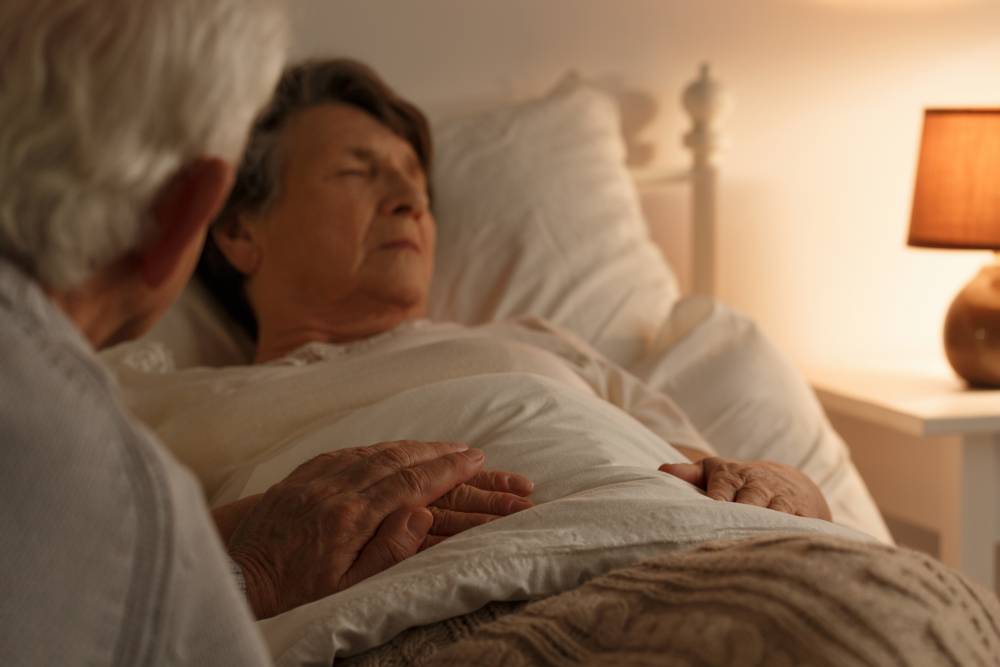
Euthanasia has taken centre stage in the upcoming Queensland election, after Premier Annastacia Palaszczuk said if re-elected, the ALP would introduce voluntary assisted dying (VAD) laws early next year.
“I believe individuals and families should be empowered to consider all the options available in consultation with their medical professionals,” she said.
Ms Palaszczuk said if re-elected, her party would introduce the long-awaited voluntary assisted dying laws in February. The laws were put on hold earlier this year.
Ms Palaszczuk said she would allow ALP members a conscience vote on the issue.
Opposition leader Deb Frecklington has refused to say whether she personally supports VAD, but she has conceded that no one should have to die in pain.
Under Queensland’s proposal, people aged 18 years and older would be allowed to seek an assisted death if they had been diagnosed by a medical practitioner as having an advanced and progressive terminal illness, or neurodegenerative condition.
Western Australia passed legislation that will enable VAD from the middle of 2021, allowing for an 18-month implementation period.
If Queensland does pass VAD legislation, it will become the second state in Australia to legalise the process. VAD became legal in Victoria on 1 June 2019. (The Northern Territory legalised VAD in 1996, but the laws were overturned in 1997.)
According to the latest data from the Voluntary Assisted Dying Review Board, since June 2019, when the laws came into effect, 348 people have been assessed for eligibility to access VAD.
Of those, 272 eligible applicants have applied for a permit, 231 permits have been issued, and 124 people have died from taking the prescribed medications.
Almost four out of five of those who died from taking the prescribed medication had terminal cancer. Others had a neurodegenerative disease, or other diseases such as pulmonary fibrosis, cardiomyopathy or chronic obstructive pulmonary disease.
Applicants for VAD were aged between 32 and 100 years, with an average age of 71 years.
The report also showed that access to VAD is growing, applications increased by 50 per cent from the first six months.
The number of doctors trained and registered to help increased by 30 per cent during the second six months of the legislation’s operation.
There are problems with Victorians gaining access to VAD in regional areas, but those problems are easing. Only 37 per cent of doctors approved were from outside metropolitan Melbourne, and there is a need for more specialists in regional areas.
Only one application was deemed non-compliant with the VAD laws. The ineligibility was due to a problem with its paperwork, not the eligibility of the applicant.
Given the shift to online doctor’s consultations during the pandemic, especially in Victoria, the VAD Review Board is calling for conversations about VAD to be allowed to be conducted over the phone or via teleconference.
Some people did express “concern” to the VAD Review Board about a lack of support from doctors.
“Unfortunately, the long-standing GP was not supportive of the request for VAD and he felt he could no longer consult with his GP,” one person said, according to the report.
Family members, even those who had initially been opposed to VAD, expressed gratitude for the process.
“It was a beautiful, peaceful death,” one told the Board. “Was absolutely a pleasant and calm process which gave me so much relief to see her go so serenely.”
Most applications take a few weeks, but “a small proportion” of applications have been delayed by minor inconsistencies or errors, and omissions of information that required follow up. This can be “frustrating for all, especially if the applicant’s health is deteriorating”, the report says.
Some doctors reported the process is “complex and time consuming”. The VAD Board said VAD must always require time and take careful planning. The Board supports all 68 safeguards, but it said it has taken the feedback on board and will attempt to make the process easier “where possible”.
I can only hope that, when my time comes, my children will be able to make the decision to allow for an assisted death rather than slowly rotting away in a pal care bed off my face on morphine. We do this for our beloved pets, so why not humans?